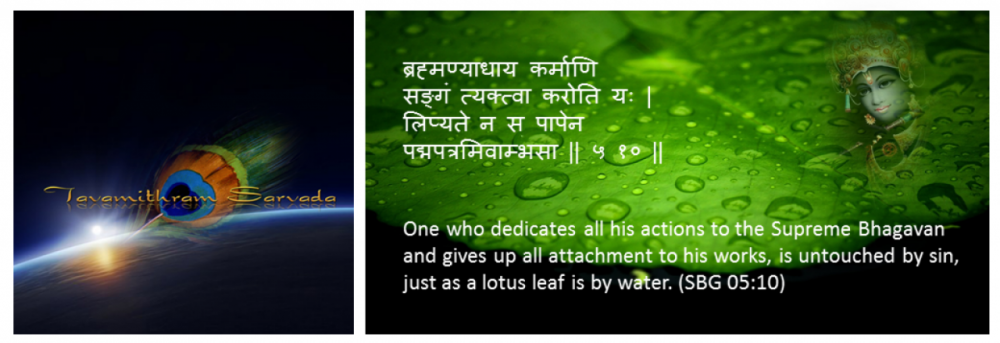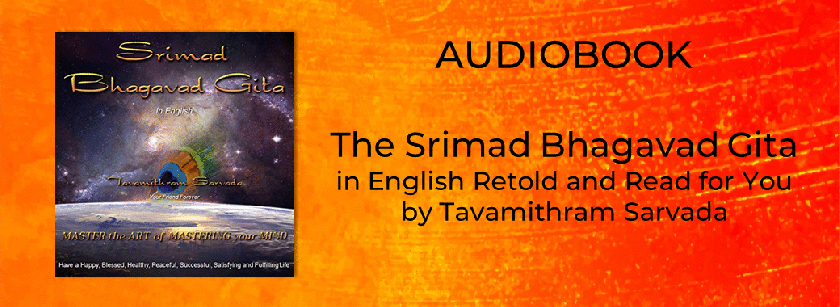Almost everyone has undergone heartaches caused by someone who hurt them or left them for someone else. It could have been among school friends, colleagues, relatives or romantic couples who had sworn earlier they would never leave. From a psychological point of view, such a heartache can be said to be a result of ego, attachment and the will to possess the loved person.
Love, attachment and being possessive about a person or object you love are in fact often confused with one another. When you truly love someone, you wish them well and do not try to possess them.

True love is truly loving, wishing the loved one well and expecting nothing in return.
In reality, all relationships except the one with the Supreme Brahman or Krishna, are bound to end in pain and separation, at least through the death of either of the two in the relationship. Excessive attachment to a person or object also gives rise to the fear of losing who or what one is attached to and this damages trust, causes suspicion and ruins one’s peace of mind.
Attachment to a person usually stems from the state of mind that one achieves through the relationship. The relationship satisfies one or more desires of the person. Bhagavan Krishna has explained the repercussions of being attached to a person or object as follows:
SBG 2:63 A person who thinks of sense objects develops an attachment for them. From this attachment desires are born and from desires, anger is born.
SBG 2:63 Anger gives birth to delusion and this delusion results in confusion of memory. When memory is confused, intelligence is destroyed and from the destruction of intelligence, the person perishes.
Bhagavan Krishna also says that the way to achieve a calm state of mind is not through suppressing the senses but by controlling them.
SBG 3:33 The learned act according to their own nature. All beings follow their own nature. What can suppression do?
SBG 3:34 It is natural to be attracted to or to be repelled by sense objects pertaining to each sense. However, one should not come under their control because they are obstacles in one’s path towards self-realisation.
Bhagavan Krishna explains in Chapter Two of the Srimad Bhagavad Gita who a ‘Sthithapragnya’ or a steady minded person is. A ‘Sthithapragnya’ is one who has perfect control over the senses. A Yogi who is a Stithapragnya has a stable mind and is steady even when sense objects come to him. He remains unmoved and enjoys eternal peace.
SBG 2:55 Shree Bhagavan Krishna says:
One who has given up all desires of the heart and has a purified mind, which finds joy in itself and not in external factors, is called a ‘Stithapragnya’ or a person of steady consciousness.
SBG 2:56 He who is not agitated or disturbed despite by the threefold miseries, or is also not euphoric when he has comforts; and is free from attachment, fear and anger, is called a sage with a steady mind.
Note:
The threefold miseries are:
- Miseries that arise from the mind and the body,
- Miseries caused by other living beings
- Miseries caused by natural disasters over which we have no control.
SBG 2:57 He who is free from attachment and neither rejoices when he achieves good nor hates evil, has steady wisdom and perfect knowledge.
Reaching such a state of mind free from delusion and being in it even during the time of death, unites one with the Supreme Being.
The sources of happiness and sorrow are explained in Shloka 160 of the 4th Chapter of the Manu Smriti:
सर्वं परवशं दुःखं सर्वं आत्मवशं सुखम् ।
एतद्विद्यात्समासेन लक्षणं सुखदुःखयोः ।।
sarvam paravasham duhkham sarvam aatmavasham sukham
etad-viddhyaat-samaasena lakshanam sukha-duhkhayo (MS 4:160)
Everything becomes a cause for sorrow if one is dependent on it for happiness, whereas, everything turns into happiness when one is dependent on oneself.
SBG 14:16 It is said that the fruits of righteous actions performed in Sattva are pure; those performed in Rajas, result in pain; and the fruit of work done in Tamas, is darkness.
SBG 5:03 A person who neither hates nor desires the results of his actions is known to be a Sanyasi or one who has renounced everything. Such a person is free from dualities and is therefore liberated from material bondage.


SBG 13:30 When a man sees the whole variety of beings as resting in the One and spreading forth from That alone, he attains the realisation of Brahman.
Note:
A man becomes one with the Supreme Brahman when he realises that all these various forms are rooted in the One.
Shri Ramana Maharishi was once asked, how to pray for other people. The Maharishi answered, “If you are abiding within the Self, there are no other people. You and I are the same. When I pray for you I pray for myself and when I pray for myself I pray for you. Real prayer is to abide within the Self. This is the meaning of ‘Tat Tvam Asi’ – ‘That Thou Art.’ There can be no separation in the Self. There is no need for prayer for yourself or any person other than to abide within the Self.”
Those who comprehend the message given above will be free from heartaches.
Going through the Ishavasya Upanishad should also help:
Jai Shri Krishna



Wow excellent…very well explained..art of mould rigid mind in flexible.. Jai Shri.Krshna
On Mon 26 Aug, 2019, 7:06 PM Tavamithram Sarvada, wrote:
LikeLike